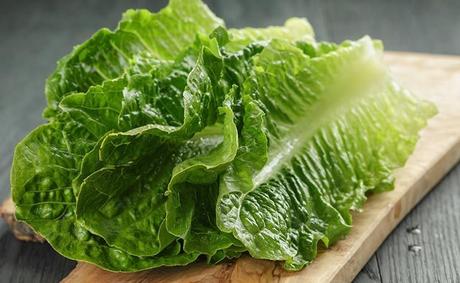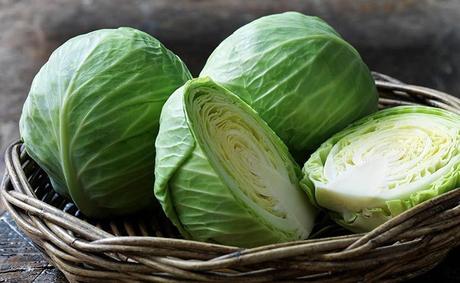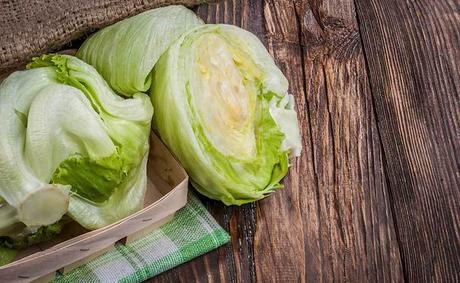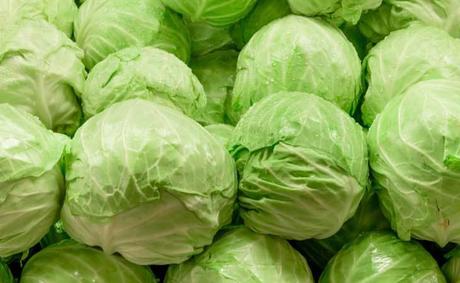These two are similar and different at the same time. At times, it can be quite hard to tell the difference between a head of lettuce and that of cabbage. But what makes them different? They are both leafy greens with a slight difference in health benefits, history, meaning and uses among others. Let’s demystify query Cabbage vs Lettuce.
Which of Them Does Your Health Condition Require?
Although they both have enough nutritional content for sustaining the body, in the end, you will learn which is better for your health condition.
What is lettuce?

History of lettuce
Thousands of years ago, Egyptians cultivated and used Lettuce leaves as one of their vegetables and its seed for the production of oil. The ancient Egyptians were the first to know about lettuce. They considered it a secret plant because of its religious significance.
History of Lettuce in Europe
With time, the Greeks and Romans understood why the plant is nutritious and joined in its cultivation. Between the 16th and 18th centuries, lettuce started developing more species after a discovery showing that cross-pollinating a particular sub-species could produce a different subspecies.
During the European medieval era, different medieval books wrote about the medicinal qualities of lettuce.
What is Cabbage

This rich phytonutrient antioxidants plant is a seasonal leafy vegetable which belongs to the family of Brassica. There are other common plants in the Brassica family such as –
- Bok Choy
- Kale
- Broccoli
- Cauliflower
- Brussels sprouts
From every point of reasoning, cabbage is one of the most cultivated vegetables in the world today.
Layers and Colors of Cabbage
Structurally, cabbage as a vegetable has a round or globular shape with clusters of thick leaves that cover the inner layers.
There are several varieties of cabbage with their different colors. Some of its various colors are –
- Green
- Red
- Purple
- Savoy
History of Cabbage
Cabbage is only a descendant of Brassicas. So, due to the many plants that belong to the Brassica family which grows in most regions of the world, it is hard to say where cabbage first appeared.
The First Regions to Cultivate Cabbage
Cabbage in the East – North China
In 4,000 BC, the people of North China set their eye on and cultivated cabbage for the first time in history.
Cabbage in the West – Europe
At first, the wild predecessors of cabbage had thick leaves that could retain water, and that is why it survived in a less water region. But some 3, 000 years back, Europeans domesticated theirs as the west cabbage, separating it from its predecessors.
Cabbage in Mesopotamia
The people of this region had known cabbage for a long time. But that doesn’t mean they cultivated them.
Cabbage in Egypt
It was during the period of the Ptolemaic dynasty that the Egyptians started cultivating cabbage, which later became a common vegetable in the region.
The Use of Cabbage for Breast Engorgement
Using the leaves of cabbage on the breasts is of utmost importance for women. Sometimes, even researchers can’t explain if the cabbage leaves have nutrients that can decrease breast pain or swelling. They also don’t know if cabbage is a cold compressor that subsides inflammation.
Facts
However, concluded studies reveal that breastfeeding moms should refrigerate cabbage leaves and put directly on their breasts for soothing and lessening of breast pain and swelling.
The Procedures
Studies have proven that the cold leaves of cabbage are soothing. So, when a breast is sore from engorgement, here is how to relieve the pain with cabbage leaves.
Cool the Leaves in the Refrigerator
You will need cold cabbage leaves to treat breast engorgement. So, if your refrigerator is not in the repairer’s shop then use it to cool the head of cabbage. Using green or red cabbage is up to you. Just that the red ones may stain the nursing bra or any clothing covering the breast.
Bring out and Remove the Outer Layers
Remove the head of cabbage from the refrigerator after chilling it. Then put the cabbage in a big plate or something of that nature, peel off the leave’s outer layer and dispose of them.
Take out Two of the Inner Leaves and Rinse
After disposing of the outer layer, take only two of its inner leaves and return the rest into your refrigerator in case of next time.
Take the two leaves to the sink and rinse them with cold water to keep them clean and free from pesticides, residue, as well as dirt.
Clean with a Towel and Cut Out the Stem
Use a clean towel to gently pat the leaves dry, removing excess water from them. After that, cut out the stem from each leaf’s center, making sure that you keep each of them in one piece. Remember to make a small opening in the middle.
Why You Should Cut the Stem
Removing the stem and slightly opening the middle will ensure that the leaves fit over the breasts without infringing on your breast rights.
Wrap the Leaves Around the Breasts
Now, the cold leaves of the cabbage should be clean and ready for use. Wrap each of them around each breast, exposing only the nipples. Avoid covering the nipples with cabbage leaves so that the nipples will remain dry and intact.
Hold the Leaves with a Bra or Breast Pad
Like holding a cold compress, do the same to each of the cabbage leaves on your breasts. You can do this by wearing a bra, or use a clean, dry breast pad to hold the cabbage leaves and prevent the breast milk from dripping.
Allow for 20 Minutes or More
After 20 minutes and you feel like the breasts are warm, you can remove the wilted leaves and throw them away.
Don’t Stop Until You See Change
Keep repeating this process with fresh leaves and the same procedures until you change to the change of feeling relieved.
Iceberg Lettuce

1- Weight Loss
Unlike cabbage, iceberg lettuce is a vegetable that has higher water content and is low in calories which aid weight loss.
2- Improved Health
Rich in vitamin A, iceberg lettuce improves the health condition of the eyes and also helps the bones to grow and develop. In all, it powers the entire immune system.
3- Prevents Birth Defect
Pregnant women should consume more of folate-rich foods such as iceberg lettuce. Such foods fight defects in birth such as Sina Bifida as well as Anencephaly and prevent them from occurring.
4- Blood Clotting
With its vitamin K content, iceberg lettuce helps the body to produce and retain enough protein for blood clotting.
5- Fights Diseases
Various health issues such as depression, chronic diseases, and folate deficiency drastically reduce if the body system has enough folate content like iceberg lettuce.
The Different Nutritional Contents of Cabbage and Lettuce
Cabbage and lettuce are both vegetables that give the body what it needs. Lettuce leaves are gluten-free and a low-carb vegetable. As such, instead of using cabbage, lettuce leaves can replace the use of bread, tortillas, and buns for a sandwich.
But they have their differences, and they are as follows –
- The amount of calories in cabbage is 22%.
- Cabbage has 1g of protein while lettuce has 1.36 g.
- Lettuce has more water than cabbage with 94.98 g.
- Cabbage has 2 g of fiber while lettuce, on the other hand, has 1.3 g.
- The vitamin K in cabbage is 85% while the one in lettuce is 126.3%.
- Lettuce has more folate than cabbage with a ratio of 38% while cabbage has 10%.
- The vitamin C content of cabbage is 54% while that of lettuce is 9.2 mg.
- Cabbage has 7% of manganese while lettuce has 13 mg.
- The content of vitamin B6 in cabbage is 6% while lettuce has 0.09 mg.
- Cabbage has 4% of calcium compared to the 36 mg in lettuce.
- The potassium content of cabbage is 4%, and that of lettuce is 194 mg.
- The Magnesium content in cabbage is 3% while lettuce has 13 mg.
Health Benefits of Cabbage
 1- For Easy Digestion
1- For Easy Digestion

Are you having issues with your digestive system? Then, this fiber-rich vegetable can help you with that. Cabbage has insoluble fiber which is a type of carbohydrate that quickly digests in the intestines. Eating more of cabbage keeps the digestive system in good health. It also acts as the source of fuel for friendly bacteria and promotes regular bowel movements.
2- Keeps the Heart Healthy
The anthocyanins in red cabbage give it a vibrant purple color.
What are anthocyanins?
As plant pigments, anthocyanins are part of the family of flavonoid. As such foods that are rich in this pigment reduces the risk of heart disease. 10 mg of flavonoid per day keeps the heart healthy.
In a few words, cabbage contains up to 36 different types of anthocyanins, and this is good news for the heart.
3- You Can Easily Add Cabbage To Your Diet
Cabbage is a cheap product worldwide and delicious too. Either you eat them raw, or you can add them to dishes such as stews, soups, sauerkraut, and salads. Prepare them to your taste, and you have everything to gain.
Health Benefits of Lettuce
For many years, the ancient people of the world cultivated and made use of this vegetable due to the leaf’s medicinal properties. But, with the introduction of scientific research, it led to the emergence of more health benefits which are as follows –
1- Protection of Neuronal Cells
Neurons consist of brain cells that make up the physical connections needed to retain memory. When a neuron dies in given physical connections, it can result in memory loss. However, if it’s an extreme case, the death of neurons can lead to diseases like Alzheimer’s.
The Function of Lettuce
From research, Lettuce extracts can control and reduce the death of neuronal cells because of their function in glucose/serum deprivation. Also, lettuce, according to more research is good for neuroprotection because it cures neurodegenerative diseases.
2- Induces Sleep
In Unani medicine, lettuce has one unique traditional usage which is to induce sleep. According to scientific research, lettuce extracts can result in isolating a depressant chemical. When you administer this chemical in animals, it will show significant sedative effects.
More About the Research
After presenting the report of research in 2013, it was clear to see that the main components to blame for this effect in lettuce is the non-polar agents. You can find them in the butanol fraction of this vegetable.
The research also observed the reducing of ventricular contractions and decreased heart rate. With the use of this chemical, you can block the excitatory signal processes of neural as well as muscular tissues.
3- Controls Anxiety
Both the ancient and this middle age have exploited the lettuce neurological properties in medical treatises. In 2012, the Asian Pacific Journal of Tropical Disease presented a report, concluding that there are a lot of anxiolytic properties in lettuce.
To prove this, when you administer lettuce extracts to lab animals, it reduces their locomotive activity. And this shows that there is considerable anxiolysis.
4- Anti-Cancer
The extracts of lettuce leaf prevent cancer. The Institute of Clinical Pathology, Vienna, Austria published medical research saying that the water extract of lettuce can bottle up leukemia cells and breast cancer cells growth.
So, one can proudly say that lettuce can also act as anti-cancer. According to experiments, one will need to consume about 3 kg of lettuce to kill up to 50% of leukemia cells in the body system.
Conclusion
We have already demystified the query Cabbage vs Lettuce. Both cabbage and lettuce are super-foods that you can’t resist. But somehow, cabbage leaves are more nutritious and sweeter compared to lettuce leaves.
Do you know why?
- Cabbage has more nutrients and vitamins than lettuce.
- You can prepare a bunch of meals with cabbage, but lettuce has limited kitchen usage.
That doesn’t mean that lettuce is not nutritious, only that cabbage is worth being in your garden.
